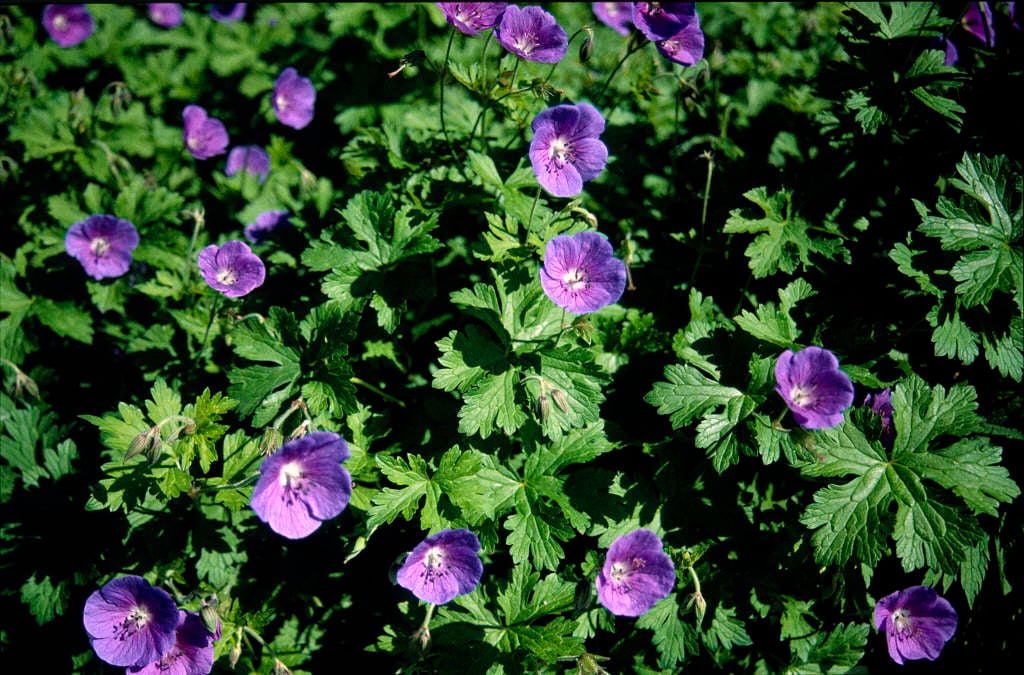Geranium himalayense
Himalayan cranesbill
A rhizomatous perennial forming a compact mat of foliage which may colour well in autumn, with white-eyed, light blue flowers 4-6cm wide in summer, often again in autumn

Buy this plant
Size
Ultimate height
0.1–0.5 metresTime to ultimate height
2–5 yearsUltimate spread
0.5–1 metresGrowing conditions
Moisture
Moist but well–drained, Well–drainedpH
Acid, Alkaline, NeutralColour & scent
| Stem | Flower | Foliage | Fruit | |
| Spring | Green | |||
|---|---|---|---|---|
| Summer | Blue | Green | ||
| Autumn | Blue | Red Green | ||
| Winter |
Position
- Full sun
- Partial shade
Aspect
South–facing or North–facing or West–facing or East–facing
Exposure
Exposed or Sheltered Hardiness
H7Botanical details
- Family
- Geraniaceae
- Native to GB / Ireland
- No
- Foliage
- Deciduous
- Habit
- Bushy
- Potentially harmful
- Harmful if eaten. Wear gloves and other protective equipment when handling. Pets: Harmful if eaten. For further information and contact numbers regarding pets, see the HTA guide to potentially harmful plants
- Genus
Geranium can be annuals, biennials and perennials, herbaceous or evergreen, with rounded, usually palmately lobed or divided leaves, and lax inflorescences of rounded, 5-petalled flowers
- Name status
Correct
- Plant range
- Himalaya
How to grow
Cultivation
Grow in any, moderately fertile soil apart from waterlogged soils. Full sun or partial shade is best but shade is tolerated
Propagation
Propagate by division in spring or propagate by basal cuttings in early to mid spring and root with bottom heat
Suggested planting locations and garden types
- Gravel garden
- Cottage and informal garden
- Wildlife gardens
- Flower borders and beds
- Ground cover
- Underplanting of roses and shrubs
Pruning
Remove flowered stems and old leaves to encourage the production of fresh leaves and flowers
Pests
May be susceptble to vine weevil, capsid bug and sawflies
Diseases
May be susceptible to downy mildews and powdery mildews
Get involved
The Royal Horticultural Society is the UK’s leading gardening charity. We aim to enrich everyone’s life through plants, and make the UK a greener and more beautiful place.